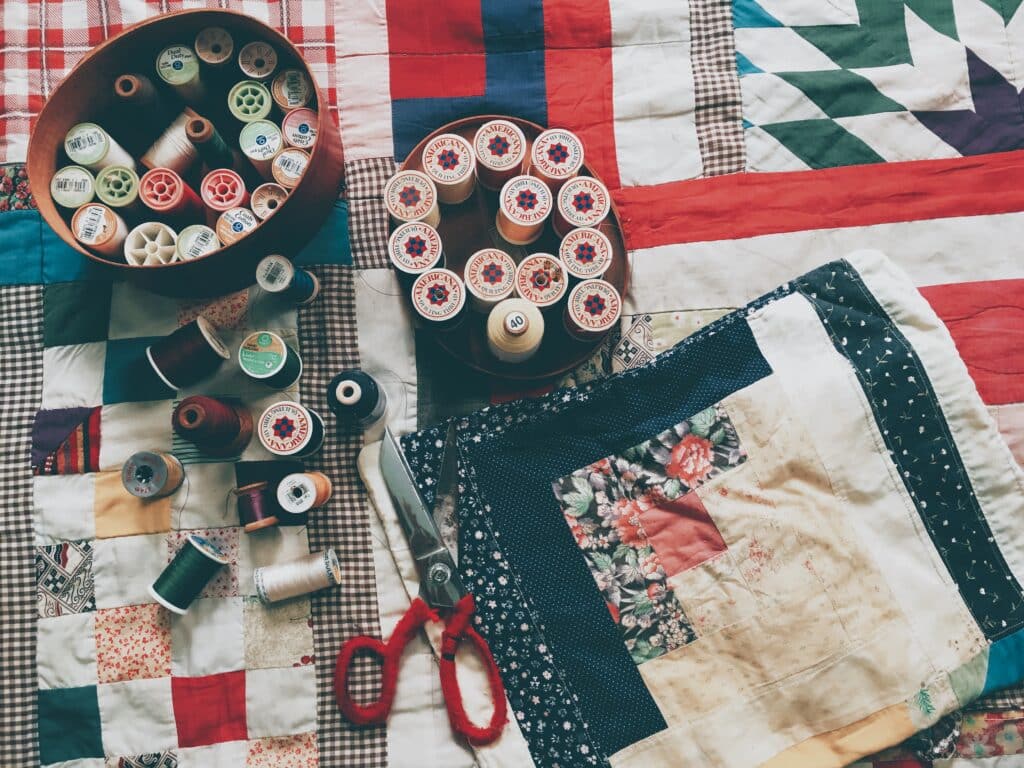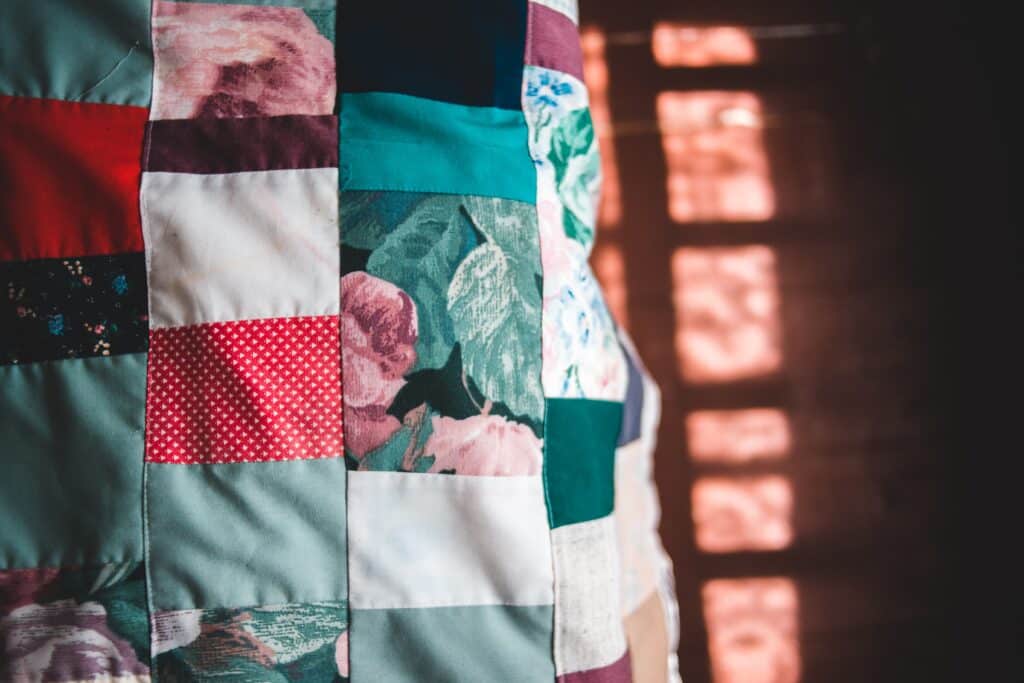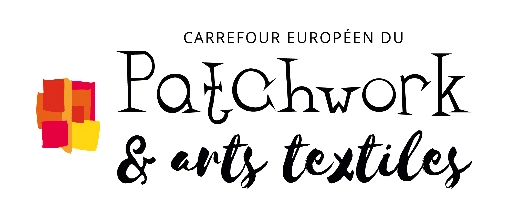Definition of patchwork
Patchwork is a needlework technique which consists in stitching together small pieces of cloth to create a larger piece. The pieces are generally cut into geometrical shapes such as squares, triangles or hexagons before being sewn together to create a more complicated pattern or design.
Patchwork does not limit to one style, one type of fabric or a few colors.
You can turn a patchwork in any kind of piece, of any size, shape or color.
What can you make with patchwork?
This needlework technique offers amazing ways to express your creativity and customize your fabrics.
With a little bit of practice and imagination, you will soon be able to create all kinds of patchworks to decorate your home or to make your own bed linen and clothing.
Many use this needlework technique chiefly to design bedspreads, although technically speaking, they would be quilts. Once padded, a patchwork is indeed called a quilt. But you could also create clothes (such as a jacket), fashion accessories like a handbag, and many other things. Just follow your imagination as it goes.


The origins of patchwork
When asked what you think of patchwork and its origins, you may picture a grandma transmitting her traditional needlework techniques decades ago, or remember a bedspread made out of recycled scraps of fabric.
Patchwork is actually much older, dating back thousands of years! And it is actually rather hard to pinpoint its precise origin.
Early traces of patchworks were indeed found in Ancient Egypt or from the ancient times of China. Pieces of fabric sewn together were notably found in ancient Egyptian tombs.
The technique that consists in stitching together different scraps of fabric to make up a new piece is shared by various cultures around the world. In Europe, it seems to have been commonly used since the Middle Ages.
As the textile industry developed, during the Industrial Revolution, patchwork became more and more popular during the 18th century.
This is especially true in the USA, where quiltmaking truly became a tradition.
This led to the Amish fully adopting it as a needlework technique.
During the ’60s, patchwork went through a revival that is still ongoing today. It has been modernized, transformed to meet the latest trends, adapted into a craft by the DIY lovers… Patchwork can be used to create modern and traditional pieces, fabrics and clothes.
As of today, patchwork and quiltmaking remain widely popular in the USA. There, a large and enthusiast community keeps creating all kinds of wonderful patchworks. Their techniques are broadly shared by artists, bloggers and influencers on social media. Patchwork is trendy again!
There’s so much to learn about this art!
Patchwork and quilting
Often and especially in France, these two terms are used interchangeably. The two techniques may also be mixed up.
While they are indeed very connected to one another, and while quilting does generally start with a patchwork as the top layer, they are two separate needlework techniques.
The difference between patchwork and quilting resides in the number of layers piled and sewn together. In fact, quilting consists in piling 3 layers of fabric: the quilt top, batting and backing. A thick and warm blanket is then made by sewing these 3 layers together.
The Amish, as true experts of recycling and handmade work, have widely contributed to spreading this technique. The Amish quilt is famous all around the world for its unique patterning: the Irish chain, bear paw or broken stars patterns are just a few.
Visit Sainte-Marie-aux-Mines, birthplace of the Amish movement, to discover the amazing exhibitions of international artists and to learn more about patchwork and quiltmaking.
Is it difficult to learn patchwork?
Patchwork may seem intimidating to beginners, but with a bit of practice and patience, learning this needlework technique is definitely possible. If you already know a little about stitching (with a machine or by hand), it will only be easier. Different patchwork techniques require a different skill level.
If you’re a beginner, start with simple projects, such as cushions or blankets made out of simple squares, before continuing onto more complicated project with intricate patterns, or even improvising.
Are you ready to learn more about this needlework technique?
Then visit our yearly fair this September and attend the workshops and training courses we offer.
There, you will meet aficionados and well-known artists, all true patchwork lovers.
The European Patchwork Meeting is a unique opportunity to attend workshops and classes of the highest quality each year.
